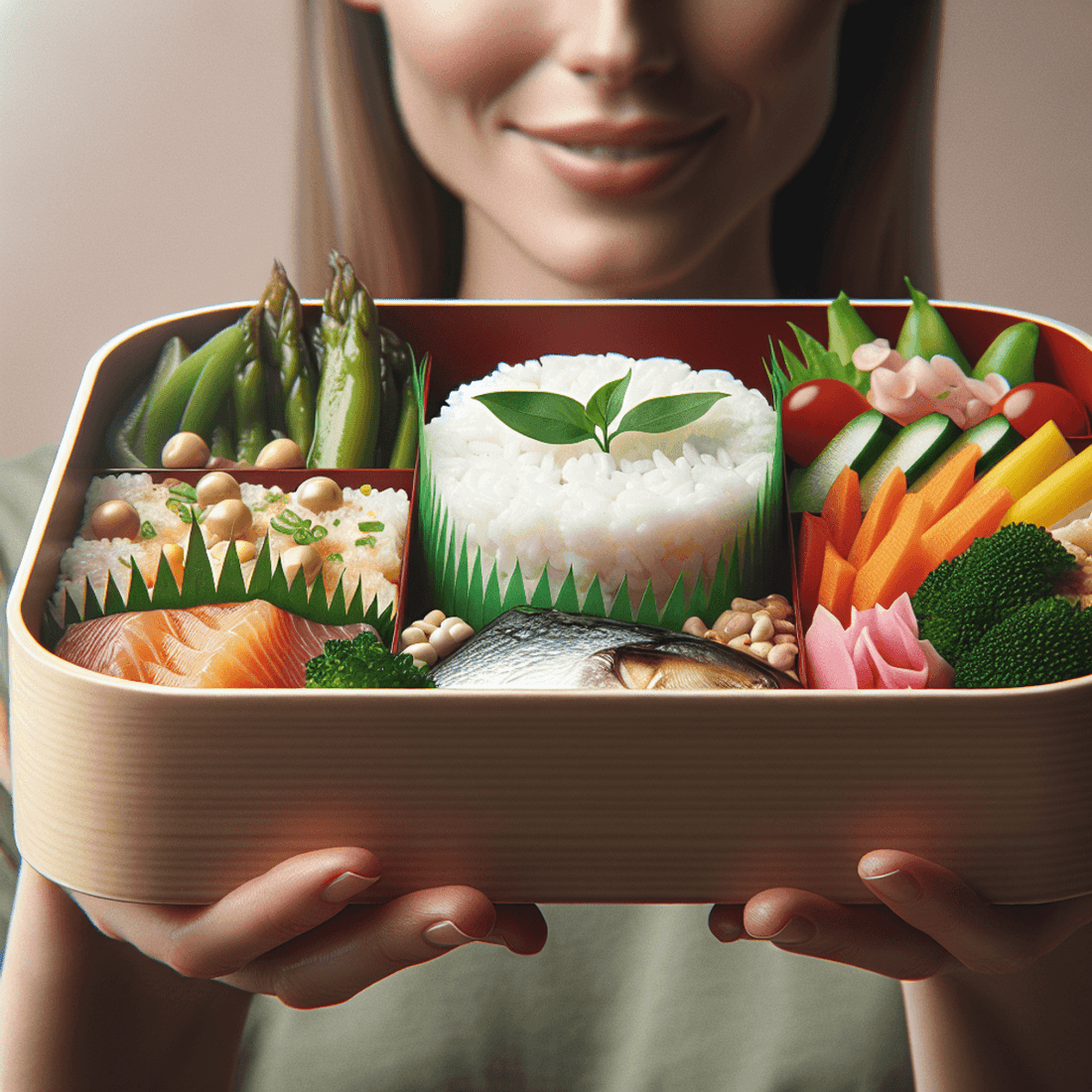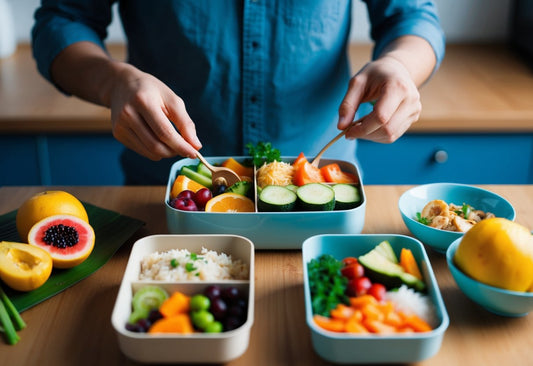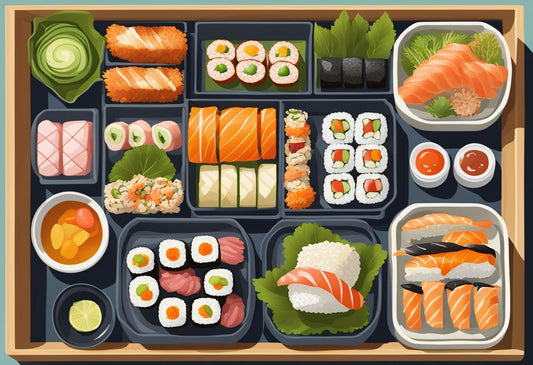
Bento Box vs Regular Lunch Box: Discover the Key Differences!
Introduction
When it comes to packing meals for on-the-go consumption, understanding the difference between bento box and lunch box can significantly impact your lunchtime experience. In this article, you will learn about the key differences between these two popular meal containers. We'll explore their unique design features, nutritional benefits, practical considerations, and environmental impact.
The bento box, a traditional Japanese lunch container, has gained immense popularity in recent years due to its aesthetically pleasing and balanced approach to meal preparation. Its multiple compartments make it ideal for separating different food items, ensuring a visually appealing and nutritionally balanced meal.
Conversely, the regular lunch box is designed primarily for functionality and convenience. Often made of plastic or insulated materials, these lunch boxes are straightforward and practical, catering to varied cuisines without a strong emphasis on presentation.
This guide will help you decide which type of container best suits your lifestyle and dietary needs.
Understanding Bento Boxes and Lunch Boxes
A bento box is a traditional Japanese lunch container featuring multiple compartments to separate various types of food. Typically made from durable materials like plastic or metal, bento boxes are designed to be visually appealing and nutritionally balanced. They often include a mix of rice, fish, pickled vegetables, and other side dishes arranged in a visually pleasing manner. The emphasis is on thoughtful preparation, portion control, and the inclusion of different food groups.
The versatility of bento boxes extends beyond traditional usage. For example, they can be used as stylish food containers for various occasions, providing both functionality and aesthetic appeal.
For instance, the Bento Box with Hydrothermal Technology and Premium Accessories is engineered for excellence. Crafted with military-grade ABS plastic, this bento box offers unparalleled protection for your gourmet meals while ensuring resilience in any professional scenario. It also features efficient hydrothermal technology which activates swift and uniform meal warming.
In contrast, a regular lunch box is a more general term for any container used to carry lunch. These come in various shapes and sizes but usually feature a single compartment with a lid. Made from materials such as plastic or insulated fabrics, regular lunch boxes focus on practicality and ease of use. They don't prioritize aesthetic presentation or nutritional balance to the same extent as bento boxes.
|
Feature Bento Box Regular Lunch Box Design |
Multiple compartments |
Usually single compartment |
|
Material |
Plastic, metal |
Plastic, insulated fabrics |
|
Aesthetic |
Visually appealing |
Functional |
|
Nutritional Focus |
Balanced portions, variety of food groups |
General meal storage |
Understanding these key characteristics helps you choose the best option for your needs, whether it's the best bento box for kids like Bentgo Kids or a simple container for daily lunches.
Key Differences Between Bento Boxes and Regular Lunch Boxes
|
Feature Bento Box Regular Lunch Box Design & Structure |
Multiple compartments for different food items |
Typically a single large compartment |
|
Presentation |
Focus on visual appeal and presentation |
Practical, less emphasis on aesthetics |
|
Nutritional Balance |
Encourages portion control and balanced nutrition |
No inherent focus on nutritional balance |
|
Material |
Durable materials like plastic or metal |
Often insulated plastic or other practical materials |
|
Cultural Significance |
Rooted in traditional Japanese lunch culture |
General use across various cultures |
|
Environmental Impact |
Reusable and eco-friendly |
Can be disposable or reusable |
Bento boxes are designed with multiple compartments, making them perfect for separating different types of food. This structure not only helps in keeping the food items distinct but also enhances the visual appeal of the meal. In contrast, regular lunch boxes typically feature a single large compartment where all food items are placed together.
When considering a bento box vs regular lunch box for kids, it's worth noting that bento boxes often make meals more exciting due to their colorful and diverse presentation. This can encourage children to eat a wider variety of foods.
In terms of nutritional balance, bento boxes follow a philosophy that promotes portion control and includes various food groups, ensuring a balanced diet. Regular lunch boxes do not inherently promote this balance.
From an environmental perspective, both bento boxes and lunch boxes can be reusable. However, bento boxes are often highlighted for their eco-friendly design as they aim to reduce waste by using durable materials.
These key differences can help you decide which type of meal container suits your needs best, whether you're looking for something practical or something that adds a touch of creativity to your daily meals.
1. Design and Structure
Bento boxes are designed with multiple compartments that keep different types of food separate. This structure not only ensures that flavors don't mix but also allows you to pack a variety of foods, creating a balanced and visually appealing meal. These compartments come in various sizes, accommodating everything from main entrees to small side dishes.
Design Features:
- Multiple Compartments: A bento box typically has several compartments. This design helps in organizing different food items, making it easier to include a balanced mix of proteins, carbohydrates, and vegetables.
- Emphasis on Food Presentation: The aesthetic aspect is significant in bento culture. Bento boxes are often arranged to be visually pleasing, which can enhance the eating experience. Food is often shaped and placed thoughtfully to create an appealing display.
Benefits:
- Portion Control: The compartments allow for precise portioning, which can help maintain a balanced diet.
- Variety in Meals: With separate sections, you can include a wide range of foods without them mingling. This encourages diversity in your diet.
- Easy to Clean: Many bento boxes are dishwasher safe, making cleanup straightforward.
The design of bento boxes contributes significantly to the overall experience of enjoying a meal. The multiple compartments not only make it practical for packing diverse meals but also elevate the act of eating into an enjoyable and aesthetically pleasing activity.
2. Nutritional Balance and Food Variety
Bento boxes are designed with a focus on balanced nutrition and a wide variety of foods. One important aspect of this approach is portion control, where each section of the box is meant to hold specific amounts of different food groups. This not only ensures a well-rounded diet but also helps prevent overeating.
The 3:2:1 Ratio
Bento meals usually follow a ratio of 3 parts carbohydrates (like rice or noodles), 2 parts protein (such as fish, meat, or tofu), and 1 part vegetables (either pickled or fresh). This structured way of packing meals encourages you to include different types of foods, which in turn promotes a diverse range of nutrients in each meal.
Keeping Foods Separate
Unlike regular lunch boxes that often have just one big compartment where all the foods mix together, bento boxes have separate sections for each item. This not only keeps the taste intact but also maintains the texture of each dish.
Encouraging Variety
The design of bento boxes naturally promotes the inclusion of various foods:
- Multiple compartments allow for a mix of cold foods and hot foods.
- The emphasis on visual appeal motivates you to incorporate colorful fruits and vegetables, which aligns with the approach to eating fruits and vegetables.
- The compact nature of the box makes it easy to pack small portions of multiple dishes.
Traditional Japanese bento boxes often include seasonal ingredients and emphasize food presentation. This not only makes the meal more enjoyable but also aligns with dietary guidelines that recommend eating a variety of foods for better health.
Flexibility and Practicality
Bento boxes come in various sizes and shapes, offering flexibility depending on your dietary needs. They are typically dishwasher-safe, making them easy to clean and reuse, which adds to their practicality.
By following these principles, bento boxes help you maintain a nutritious and varied diet effortlessly.
3. Practical Considerations for Packing Lunches
When it comes to meal prep using a bento box, there are several practical tips to keep in mind to ensure your lunch is both balanced and visually appealing.
Tips for Packing a Bento Meal:
- Choose the Right Materials: Opt for bento boxes made from durable materials like plastic or metal. They often come with tight-fitting lids that help keep your food warm or cold as needed.
- Use Multiple Compartments: Utilize the multiple compartments to separate different food groups, ensuring a balance of carbohydrates, proteins, and vegetables. This helps maintain portion control and prevents flavors from mixing.
- Include Utensils: Many bento boxes come with built-in utensils, making it convenient to eat on the go without needing additional cutlery.
- Temperature Control: Some bento boxes offer insulation features. If your box doesn't, consider packing foods that taste good at room temperature or using an insulated bag.
- Ease of Transport: Look for bento boxes that are easy to open and close, especially if you're packing lunches for children. The design should be ergonomic and user-friendly.
- Visual Appeal: Create a visually appealing meal by incorporating fun colors through various fruits and vegetables. Use dividers or silicone cups to enhance the presentation.
- Keep It Balanced: Pack a variety of foods to keep the meal interesting. Include items like rice balls, sliced veggies, grilled chicken, and fruit slices.
Examples:
- Classic Lunch Bento:
- Rice or quinoa in one compartment
- Grilled chicken slices in another
- A mix of steamed vegetables in the third
- Fresh fruit like berries or apple slices in the fourth
- Vegetarian Bento:
- Mixed greens salad with cherry tomatoes and cucumbers
- Hummus dip with carrot sticks
- Whole grain pita bread slices
- A small portion of nuts or seeds
Whichever you choose, a bento box offers an organized way to bring food that is both nutritious and aesthetically pleasing. Whether you're packing lunch for work, school, or travel, it's the perfect choice for those who appreciate thoughtful meal preparation.
4. Environmental Impact and Reusability
Choosing a reusable bento box instead of disposable ones is a significant way to reduce waste. Traditional lunch containers, which are often used only once, contribute to the growing issue of plastic pollution. In contrast, bento boxes are usually made from long-lasting materials like plastic or metal, making them an eco-friendly option for both children and adults.
Key Environmental Benefits:
- Reduction in Single-Use Plastics: Using a reusable bento box eliminates the need for plastic bags and disposable containers, which often end up in landfills.
- Durable Materials: Bento boxes constructed from high-quality plastic or metal can be used repeatedly, minimizing the demand for single-use products.
- Versatility: A single bento-style container can replace multiple disposable items, including sandwich bags and snack packs.
Bento boxes promote conscious consumption and waste reduction, supporting sustainable living practices. They are not only environmentally friendly but also provide practical advantages for individuals who prepare lunches for school or work. The thoughtful design and reusability make them an excellent choice for anyone aiming to make a positive impact on the environment.
The sustainability of bento boxes also reflects an important aspect of Japanese culture that emphasizes care and attention to detail. Whether you're packing lunch for yourself or your family, switching to a reusable bento box can bring about meaningful change.
Conclusion: Choosing Between a Bento Box and Regular Lunch Box
When deciding between a bento box and a regular lunch box, it's important to consider your personal preferences, lifestyle, and dietary needs. If you enjoy having a variety of foods in one meal and appreciate the visual appeal of a well-presented lunch, using a bento box might be the best choice for you. The multiple compartments in a bento box allow for different lunch ideas, ensuring you get a balanced diet with various food groups.
Think about whether you require a food storage container that can keep your food at the desired temperature. Bento boxes often come with insulation options for both hot or cold meals, making them versatile. On the other hand, if you prefer simpler meals like peanut butter and jelly sandwiches, a regular lunch box might be more suitable.
Things to consider:
- Meal Variety: Bento boxes offer more compartments for variety.
- Temperature Needs: Choose based on whether you need to keep your lunch hot or cold.
- Portion Control: Bentos encourage balanced portions of carbs, proteins, and vegetables.
- Convenience: Regular lunch boxes are straightforward and practical.
Whether you're packing lunch for work or school, the right choice depends on what fits best with your daily routine and nutritional goals.
Grab Your Ceedalles Bento Box Today!
Elevate your lunch experience with a Ceedalles bento box. Known for their high-quality materials and unique designs, Ceedalles offers a variety of options to suit your needs—from small bento boxes perfect for portion control to leakproof bento boxes that ensure your meal stays fresh. Discover the difference between a bento box and a lunch box by trying one today.
Ceedalles is not just about providing innovative and sustainable products; we also stand behind our quality. Each product comes with a warranty that covers any defects in material or workmanship for a period of one year from the date of purchase.
- Shop Ceedalles Bento Boxes: Visit our product page
- Explore Different Bento Boxes: See all options
To learn more about our brand and mission, feel free to check out our About Us page.



